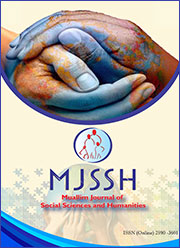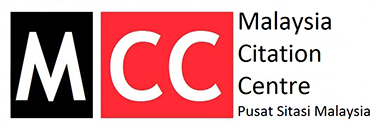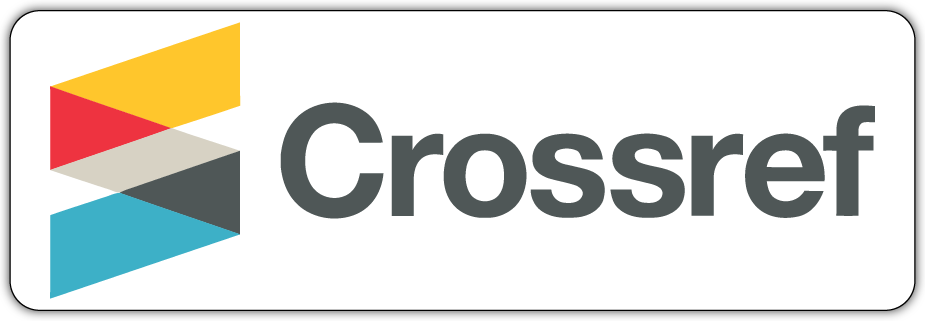Sosioekonomi keluarga sebagai faktor pendorong gejala gengsterisme murid India Pendidikan Moral di sekolah menengah [Family socioeconomic status as an impulse factor of gangsterism among Indian Moral Education student in secondary school]
Keywords:
Socioeconomic Status, Family Institution, Peer Group, Gangsterism, Moral Education, Sosioekonomi Keluarga, Institusi Kekeluargaan, Rakan Sebaya, Gengsterisme, Pendidikan MoralAbstract
This study is aimed to examine the family’s socioeconomic status which drives the symptoms of gangsterism among Indian Moral Education students from the Kuala Lumpur Federal Territory National Secondary Schools. This study was conducted via survey design using the Parent and Peer Attachment Inventory (IPPA) questionnaire. Using purposive sampling technique a total of 234 students were selected as respondents. The data collected were analysed using SPSS version 23.0, and descriptive and inference methodology was presented to the results. The results of one-way ANOVA revealed significant relationships and strong correlations between components such as residential social environment, family income, level of parental education, family institution, self and peers influence. High mean scores suggest these six components contribute to the involvement of gangster symptoms. The finding indicates that a major relationship exists between the family’s socioeconomic status as a driving factor in the symptoms of gangsterism among Indian Moral Education students from the National Secondary Schools. These results also have consequences for students, teachers, parents, community leaders, ministries of education, and NGOs in general. Nevertheless, a more extensive study should be carried out in all the states of Malaysia to examine the degree of "threat" to social, economic and political stability of these symptoms.
[Kajian ini bertujuan untuk meninjau hubungan taraf sosioekonomi keluarga yang mendorong gejala gengsterisme dalam kalangan murid India Pendidikan Moral Sekolah Menengah di Wilayah Persekutuan Kuala Lumpur. Kajian ini menggunakan reka bentuk kajian tinjauan (survey) dengan menggunakan instrumen soal selidik Inventory of Parent and Peer Attachment (IPPA). Seramai 234 orang murid dipilih menjadi responden dengan menggunakan teknik persampelan bertujuan (purposive sampling). Data yang dikumpul dianalisis menggunakan SPSS Versi 23.0 dan hasil dapatan dipersembahkan secara diskriptif dan inferensi. Keputusan ANOVA sehala menunjukkan hubungan signifikan serta wujud korelasi yang kuat di antara persekitaran sosial tempat tinggal, pendapatan seisi keluarga, tahap pendidikan ibu bapa, institusi kekeluargaan, diri sendiri dan rakan sebaya. Skor min yang tinggi menunjukkan keenam-enam komponen ini menyumbang kepada penglibatan ke dalam gejala gengsterisme. Dapatan kajian menunjukkan terdapat hubungan signifikan di antara taraf sosioekonomi keluarga sebagai faktor pendorong gejala gengsterisme dalam kalangan murid India Pendidikan Moral di Sekolah Menengah. Hasil kajian mempunyai implikasi terhadap pelajar, guru, ibu bapa, pemimpin masyarakat, pihak kementerian pendidikan dan pihak NGO. Kajian yang lebih luas dan mendalam perlu dilaksanakan di semua negeri di Malaysia untuk meninjau tahap "ancaman" gejala ini kepada kestabilan sosial, ekonomi dan politik negara.]
References
Alagappar, P., Len, C.W., George, M., Lee, A.S.H., & Wong, M.S.H. (2005). Gangsterism among teenagers in Malaysia. Taylor’s College. Retrieved from http://www.fp.utm.my/epusatsumber/listseminar/7.qram05/session2/100.ponmalaralagappar.pdf.
Numbeo. (2018). Crime index by country. World crime index rate. Retrieved from https://www.numbeo.com.
World of Buzz. (2017). Malaysia ranks number 1 in South East Asia for highest crime rate. World Crime Index Rate. Retrieved from https://www.worldof buzz.com.
Khalid Abu Bakar. (2017). An extraordinary and loyal policeman. New Straits Times. Retrieved from https://www.nst.com.my/news/nation/2017/09/276059/khalid-abu-bakar-extraordinary-and-loyal-policeman.
Rueben Ananthan, S.D. (2019). Crime trends and patterns in Malaysia. Kyoto review of Southeast Asia. Retrieved from https://kyotoreview.org/trendsetters/crime-trends-and-patterns-in-malaysia/.
UNICEF. (2010). Children without: A study of urban child poverty and deprivation in low-cost flats in Kuala Lumpur. United Nations Childrens’ Fund. Retrieved from https://www.unicef.org/malaysia.
Abdul Kadir, N.B., Rahim, S.A., Mustapha, Z., Abdul Mutalib, M.H., Kee, C.P., & Mohamed, R.H. (2012). External assets as predictors of positive emotions among at-risk youth in Malaysia. Asian Journal of Social Work and Policy Review, 6(1), 203-217.
Seffetullah Kuldas., Shahabuddin Hashim., & Hairul Nizam Ismail. (2015). Malaysian adolescent students’ needs for enhancing thinking skills, counteracting risk factors and demonstrating academic resilience. International Journal of Adolescence and Youth, 20(1), 32-47.
Azizi Yahaya., & Badrulzaman Baharom. (2006). Persekitaran keluarga dan kesannya terhadap tingkah laku devian remaja di daerah Pontian Johor. Tesis doktor falsafah yang tidak diterbitkan, Universiti Teknologi Malaysia. Johor Baharu.
Kementerian Pendidikan Malaysia. (2012). Preschool to post-secondary education. Malaysia Education Blueprint 2013 – 2025, Putrajaya: Government Printers.
Mahdzir Khalid. (2017). Subjek sivik mungkin akan diperkenal semula, mengukuh dan menerapkan nilai perpaduan dalam kalangan pelajar yang semakin pudar. Utusan Borneo. Diakses daripada https://www.utusanborneo.com.my/2017/04/18/subjek-sivik-mungkin-akan-diperkenal-semula.
Nooraisah Katmun., Siti Rafizah Zakaria., & Mohd Abdullah Jusoh. (2014). Faktor penentu masalah disiplin dalam kalangan pelajar sekolah menengah di Wilayah Persekutuan. Management Research Journal, 3, 140-154.
Rohani Abdul Karim. (2017). Kaji semula hukuman buang sekolah. MyMetro. Diakses daripada https://www.hmetro.com.my/mutakhir/2017/10/269224/.
Rosalwani Che Soh. (2015). Pelajar direkrut jual, menagih dadah. Sinar Online. Diakses daripada http://www.sinarharian.com.my/mobile/hiburan/pelajar-direkrut-jual-menagih-dadah-1.378495.
Nilay Ozkan Kuyel, B.S. (2002). A comparison of moral reasoning and moral orientation American and Turkish uiversity students. Masters thesis, which is not been published, Department of Counselling, Development and Higher Education, University of North Texas.
Polis Diraja Malaysia. (2012). Bukit Aman statistics on crime. Malaysiakini. Retrieved from https://www.malaysiakini.com/news/207296.
Agensi Anti Dadah Kebangsaan. (2013). Laporan Tahunan AADK. Kuala Lumpur: Government Printers.
Suppiah Nachiappan., Sandra Piriya Perumalsamy., Fatimah Haji Mohd Zulkafaly., & Harikrishnan Andi. (2014). Penyalahgunaan dadah dan langkah mengatasi dari segi kognitif di pusat Pengasih Malaysia. Journal Peradaban Melayu, 9, 176-184.
Lee Lam Thye. (2017). Sekolah, polis perlu bekerjasama atasi gangsterisme. Berita Harian. Diakses daripada https://www.bharian.com.my/node/278575.
Lawrence Kohlberg. (1969). Stage and sequence: The cognitive development approach to socialization. In Goslin, D.A. (Eds.), Handbook of socialization theory of research (pp. 347-480). Chicago: Rand McNally Press.
Badrulzaman Baharom. (2006). Persekitaran keluarga dan kesannya terhadap tingkah laku devian remaja di daerah Pontian, Johor. Tesis doktor falsafah yang tidak diterbitkan, Faculty of Education, Universiti Teknologi Malaysia, Johor.
Amar Singh Sidhu. (2005). The rise of crime in Malaysia: An academic and statistical analysis. Journal of the Kuala Lumpur Royal Malaysia Police College, 4(1), 17-28.
Bogdan, R.C., & Biklen, S.K. (1998). Qualitative research for education. An Introduction to Theory and Methods, Boston: Allyn & Bacon Press.
Mohd Majid Konting. (1998). Teacher effectiveness: The beliefs of effective Bahasa Melayu teachers’ pertanika. Journal of Social Sciences & Humanities, 6(1), 1-12.
Kerlinger, F.N. (1970). Foundation of behavioural research. New York: Holt, Rinehart and Winston Press.
Fraenkel, J.R., Wallen, N.E., & Hyun, H.H. (1996). How to design and evaluate research in education. New York: McGraw-Hill.
Krejcie, R.V., & Morgan, D.W. (1970). Determining sample size for research activities. Educational and Psychological Measurement Journal, 30(3), 607-610.
Tuckman, B.W. (1965). Development sequence in small groups. Journal of Psychological Bulletin, 63(6), 384-399.
Sekaran, U. (1992). Research methods for business: A skill building approach. (2nd Ed). United States of America, USA: John Wiley & Sons, Inc. Publishing.
Nadarajan Thambu. (2019). Penerapan nilai alam sekitar melalui teknik drama di dalam kelas Pendidikan Moral: Satu kajian tindakan. Muallim Journal of Social Sciences and Humanities, 3(2), 188-206. https://doi.org/10.33306/mjssh/14.
Vania Ceccato., & Peter Sturmey. (2017). Does Poverty Cause Violence? Wiley Online Library. Retrieved from https://onlinelibrary.wiley.com/doi/abs/10.1002/9781119057574.whbva031.
Paulo Freire. (1968). Pedagogy of the oppressed. New York: Seabury Press.
Nadarajan Thambu. (2019). Potensi unsur-unsur Teater Forum dalam pembentukan insan menyeluruh: Dapatan kajian kualitatif kelas Pendidikan Moral. Muallim Journal of Social Science and Humanities, 3(1), 77-95.
Bandura, A. (1977). Social learning theory. Englewood Cliffs, New Jersey: Prentice-Hall.
Maslow, A.H. (1943). A theory of human motivation. Journal of Psychological Review, 50(4), 370-396.
Conger, R.D. (2010). Socio-economic status, family processes, and individual development. Journal of Marriage and Family, 72(1), 685-704.
Denison Jeyasuria. (1998). The poverty threshold must be revised. In Janakey Raman, The Malaysian Indian dilemma: The struggles and agony of the Indian community in Malaysia, (pp. 263). Selangor: Nationwide Human Development and Research Centre Publisher.
Anbalakan, K. (2003). The New Economic Policy and further marginalization of the Indians. Kajian Malaysia. Retrieved from http://web.usm.my/km/KM%2021,2003/21-16.pdf.
Kernial Singh Sandhu. (1958). Indian migration and population change in Malaya, c.100-1957 A.D. Tesis sarjana yang tidak diterbitkan, Universiti Malaya, Kuala Lumpur.
Arasaratnam, S. (1970). Indians in Malaysia and Singapore. Singapore: Oxford University Press.
Marimuthu, T. (1975). The influence of home background on educational careers and aspirations of Tamil youths in Peninsular Malaysia. Unpublished PhD Dissertation, University of Manchester, England.
Ramasamy, P. (1993). Socio-economic transformation of Malaysian Indian plantation workers. Indian Communities in Southeast Asia, Singapore: Time Academic Press.
Farrington, D.P. (1993). Understanding and preventing bullying. Journal of Crime and Justice, 17, 381-458.
Johannan Sim. (2015). Dei, why are so many Malaysian gang members Indians? Cilisos.my. Retrieved from https://cilisos.my/dei-why-are-so-many-malaysian-gang-members-indian/.
Sapto Pradityo. (2018). India Jadi Gangster Di Malaysia. Detik X. Diakses daripada https://news.detik.com/x/detail/intermeso/20180213/India-Jadi-Gangster-di-Malaysia.
Chamhuri Siwar., Ferdoushi Ahmed., Ahmad Bashawir., & Md. Shahin Mia. (2016). Urbanisation and urban poverty in Malaysia: Consequences and vulnerability. Journal of Applied Sciences, 10(1), 154-160.
Sulochana Nair., & Sagaran, S. (2015). Poverty in Malaysia: Need for a paradigm shift. Institutions and Economics Journal, 7(3), 95-123.
Published
 Abstract Display: 1586
Abstract Display: 1586  PDF Downloads: 1253
PDF Downloads: 1253 













 This work is licensed under a
This work is licensed under a